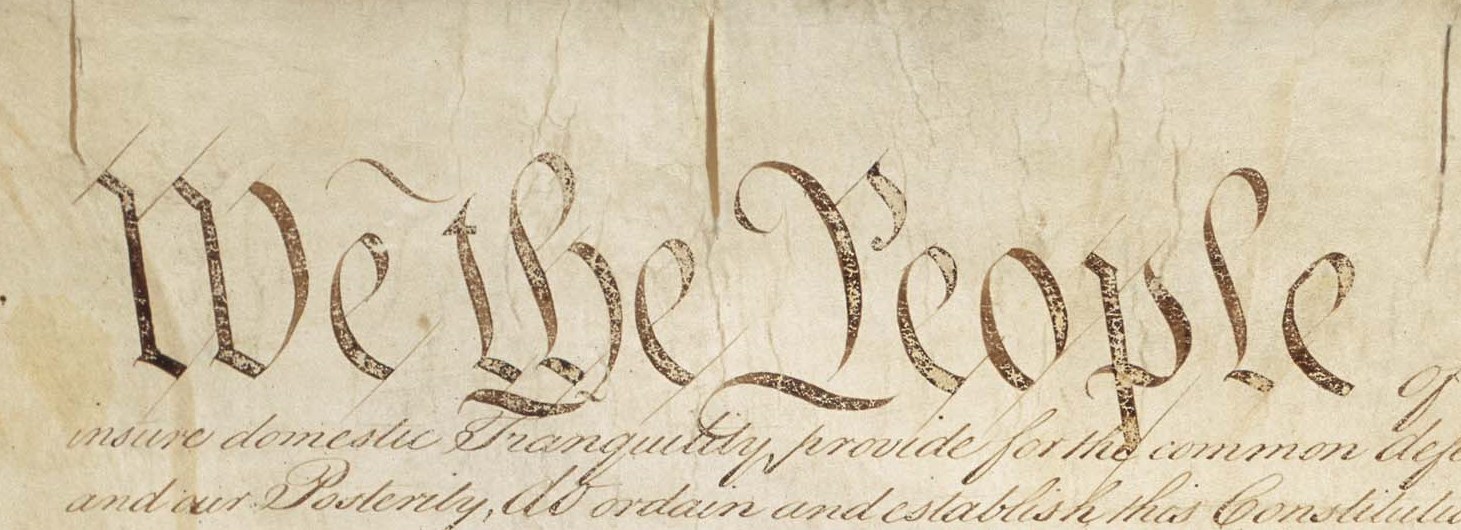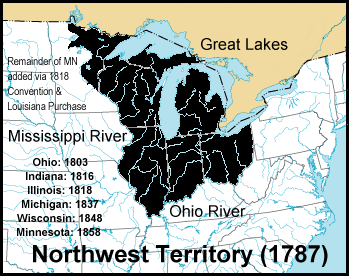|
Homestead Act
The Homestead Acts were several laws in the United States by which an applicant could acquire ownership of government land or the public domain, typically called a homestead. In all, more than of public land, or nearly 10 percent of the total area of the United States, was given away free to 1.6 million homesteaders; most of the homesteads were west of the Mississippi River. An extension of the homestead principle in law, the Homestead Acts were an expression of the Free Soil policy of Northerners who wanted individual farmers to own and operate their own farms, as opposed to Southern slave-owners who wanted to buy up large tracts of land and use slave labor, thereby shutting out free white farmers. The first of the acts, the Homestead Act of 1862, opened up millions of acres. Any adult who had never taken up arms against the Federal government of the United States could apply. Women and immigrants who had applied for citizenship were eligible. Several additi ... [...More Info...] [...Related Items...] OR: [Wikipedia] [Google] [Baidu] |
Homestead Act Of 1860
The Homestead Act of 1860 in the United States would have made land available for 25 cents per acre. This act was passed by the United States Congress, but was ultimately vetoed by President James Buchanan. Proponents This was at a time where Northerners believed that the federal government should give plots of vacant Western land to pioneers for free. People went to the West to start new lives and wanted cheap land.Opposition There was much concern about the free land idea. Southerners, who were ver ...[...More Info...] [...Related Items...] OR: [Wikipedia] [Google] [Baidu] |
Eric Foner
Eric Foner (; born February 7, 1943) is an American historian. He writes extensively on American political history, the history of freedom, the early history of the Republican Party, African-American biography, the American Civil War, Reconstruction, and historiography, and has been a member of the faculty at the Columbia University Department of History since 1982. He is the author of several popular textbooks. According to the Open Syllabus Project, Foner is the most frequently cited author on college syllabi for history courses. Foner has published numerous books on the Reconstruction period, having published '' Reconstruction: America's Unfinished Revolution - 1863-1877'' in 1989 and more than 10 other books on the topic.Perman, Michael. "Eric Foner's Reconstruction: A Finished Revolution". ''Reviews in American History,'' Vol. 17, No. 1. (March 1989), pp. 73–78. His online courses on "The Civil War and Reconstruction", published in 2014, are available from Columbia Univers ... [...More Info...] [...Related Items...] OR: [Wikipedia] [Google] [Baidu] |
Marginal Land
Marginal land is land that is of little agricultural or developmental value because crops produced from the area would be worth less than any rent paid for access to the area. Although the term ''marginal'' is often used in a subjective sense for less-than-ideal lands, it is fundamentally an economic term that is defined by the local economic context. Thus what constitutes marginal land varies both with location and over time: for example, "a soil profile with a set of specific biophysical characteristics reported as “marginal” in the US corn belt may be one of the better soils available in another context". Changes in product values – such as the ethanol-demand induced spike in corn prices – can result in formerly marginal lands becoming profitable. Marginal lands can therefore be more difficult to delineate as compared to "abandoned crop lands" which reflect more clearly definable landowner-initiated land use changes. Land may be marginal for a number of reasons, includin ... [...More Info...] [...Related Items...] OR: [Wikipedia] [Google] [Baidu] |
Jeffersonian Democracy
Jeffersonian democracy, named after its advocate Thomas Jefferson, was one of two dominant political outlooks and movements in the United States from the 1790s to the 1820s. The Jeffersonians were deeply committed to American republicanism, which meant opposition to what they considered to be artificial aristocracy, opposition to corruption, and insistence on virtue, with a priority for the " yeoman farmer", "planters", and the " plain folk". They were antagonistic to the aristocratic elitism of merchants, bankers, and manufacturers, distrusted factory workers, and were on the watch for supporters of the Westminster system. The term was commonly used to refer to the Democratic-Republican Party (formally named the "Republican Party"), which Jefferson founded in opposition to the Federalist Party of Alexander Hamilton. At the beginning of the Jeffersonian era, only two states (Vermont and Kentucky) had established universal white male suffrage by abolishing property requireme ... [...More Info...] [...Related Items...] OR: [Wikipedia] [Google] [Baidu] |
Yeoman
Yeoman is a noun originally referring either to one who owns and cultivates land or to the middle ranks of servants in an English royal or noble household. The term was first documented in mid-14th-century England. The 14th century also witnessed the rise of the yeoman longbow archer during the Hundred Years' War, and the yeoman outlaws celebrated in the Robin Hood ballads. Yeomen also joined the English Navy during the Hundred Years' War as seamen and archers. In the early 15th century, yeoman was the rank of chivalry between page and squire. By the late 17th century, yeoman became a rank in the new Royal Navy for the common seamen who were in charge of ship's stores, such as foodstuffs, gunpowder, and sails. References to the emerging social stratum of wealthy land-owning commoners began to appear after 1429. In that year, the Parliament of England re-organized the House of Commons into counties and boroughs, with voting rights granted to all freeholders. The Act of 14 ... [...More Info...] [...Related Items...] OR: [Wikipedia] [Google] [Baidu] |
Freeman Homestead-certificate
Freeman, free men, or variant, may refer to: * a member of the Third Estate in medieval society (commoners), see estates of the realm * Freeman, an apprentice who has been granted freedom of the company, was a rank within Livery companies * Freeman, in Middle English synonymous with franklin (class), initially a person not tied to land as a villein or serf, later a land-owner * Freeman (Colonial), in U.S. colonial times, a person not under legal restraint * A person who has been awarded Freedom of the City * Free tenant, a social class in the Middle Ages * Freedman, a former slave that had been freed from bondage Places ;In the United States * Freeman, Georgia, an unincorporated community * Freeman, Illinois, an unincorporated community * Freeman, Indiana, an unincorporated community * Freeman, South Dakota, a city * Freeman, Virginia, an unincorporated community * Freeman, Wisconsin, a town in Crawford County * Freeman, Langlade County, Wisconsin, an unincorporated communi ... [...More Info...] [...Related Items...] OR: [Wikipedia] [Google] [Baidu] |
Organic Act
In United States law, an organic act is an act of the United States Congress that establishes a territory of the United States and specifies how it is to be governed, or an agency to manage certain federal lands. In the absence of an organic law a territory is classified as unorganized. The first such act was the Northwest Ordinance, passed in 1787 by the U.S. Congress of the Confederation (under the Articles of Confederation, predecessor of the United States Constitution). The Northwest Ordinance created the Northwest Territory in the land west of Pennsylvania and northwest of the Ohio River and set the pattern of development that was followed for all subsequent territories. The Northwest Territory covered more than 260,000 square miles and included all of the modern states of Ohio, Indiana, Illinois, Michigan, Wisconsin, and the northeastern part of Minnesota. The District of Columbia Organic Act of 1801 incorporated Washington, D.C. and placed it under the exclusive ... [...More Info...] [...Related Items...] OR: [Wikipedia] [Google] [Baidu] |
Pacific Northwest
The Pacific Northwest (sometimes Cascadia, or simply abbreviated as PNW) is a geographic region in western North America bounded by its coastal waters of the Pacific Ocean to the west and, loosely, by the Rocky Mountains to the east. Though no official boundary exists, the most common conception includes the U.S. states of Oregon, Washington, and Idaho, and the Canadian province of British Columbia. Some broader conceptions reach north into Alaska and Yukon, south into northern California, and east into western Montana. Other conceptions may be limited to the coastal areas west of the Cascade and Coast mountains. The variety of definitions can be attributed to partially overlapping commonalities of the region's history, culture, geography, society, ecosystems, and other factors. The Northwest Coast is the coastal region of the Pacific Northwest, and the Northwest Plateau (also commonly known as " the Interior" in British Columbia and the Inland Northwest in the U ... [...More Info...] [...Related Items...] OR: [Wikipedia] [Google] [Baidu] |
Oregon Territory
The Territory of Oregon was an organized incorporated territory of the United States that existed from August 14, 1848, until February 14, 1859, when the southwestern portion of the territory was admitted to the Union as the State of Oregon. Originally claimed by several countries (see Oregon Country), the region was divided between the UK and the US in 1846. When established, the territory encompassed an area that included the current states of Oregon, Washington, and Idaho, as well as parts of Wyoming and Montana. The capital of the territory was first Oregon City, then Salem, followed briefly by Corvallis, then back to Salem, which became the state capital upon Oregon's admission to the Union. Background Originally inhabited by Native Americans, the region that became the Oregon Territory was explored by Europeans first by sea. The first documented voyage of exploration was made in 1777 by the Spanish, and both British and American vessels visited the region not long ... [...More Info...] [...Related Items...] OR: [Wikipedia] [Google] [Baidu] |
Native Americans In The United States
Native Americans, also known as American Indians, First Americans, Indigenous Americans, and other terms, are the Indigenous peoples of the mainland United States ( Indigenous peoples of Hawaii, Alaska and territories of the United States are generally known by other terms). There are 574 federally recognized tribes living within the US, about half of which are associated with Indian reservations. As defined by the United States Census, "Native Americans" are Indigenous tribes that are originally from the contiguous United States, along with Alaska Natives. Indigenous peoples of the United States who are not listed as American Indian or Alaska Native include Native Hawaiians, Samoan Americans, and the Chamorro people. The US Census groups these peoples as " Native Hawaiian and other Pacific Islanders". European colonization of the Americas, which began in 1492, resulted in a precipitous decline in Native American population because of new diseases, wars, ethni ... [...More Info...] [...Related Items...] OR: [Wikipedia] [Google] [Baidu] |
Privatization Of Public Land (United States)
In the United States, land owned and managed by governmental organizations is referred to as public land. As of 2020, the federal government owns roughly 640 million acres of land, the majority of which is concentrated in the Western US and Alaska. Privatization of public land involves the selling or auctioning of public lands to the private sector. The private sector can refer to private individuals, industry, or corporations. History The Homestead Act On May 20, 1862 President Lincoln signed the Homestead Act into law. This legislation allowed settlers to acquire 160 acres of federal land in the west, provided that they pay a filing fee and maintain residence on the parcel for five continuous years. This was intended to encourage western expansion and settlement into the interior. Between its passage in 1862 and 1900, 80 million acres of federal land had been claimed through the Homestead Act. The Sagebrush Rebellion In much of the west, public land is leased to ranchers a ... [...More Info...] [...Related Items...] OR: [Wikipedia] [Google] [Baidu] |








